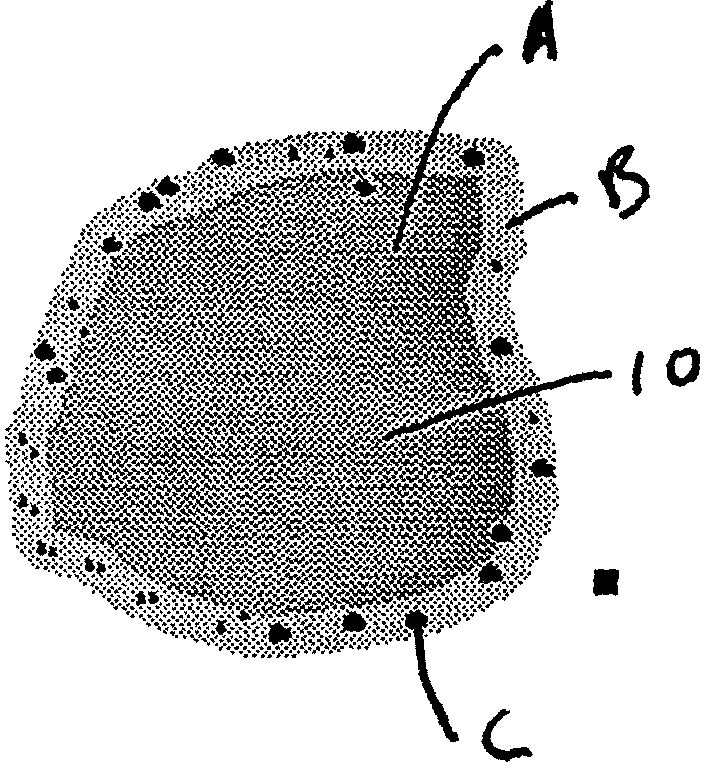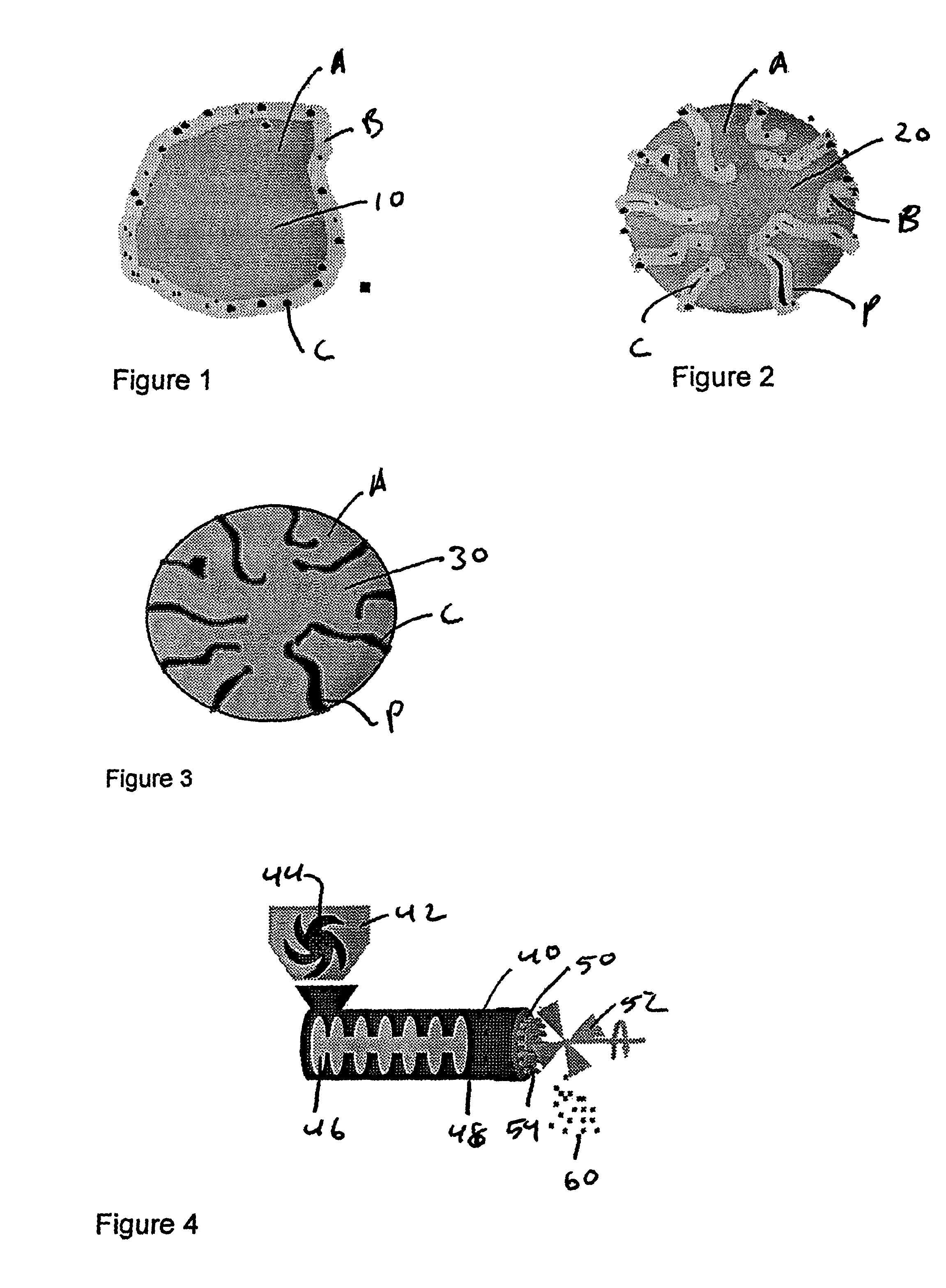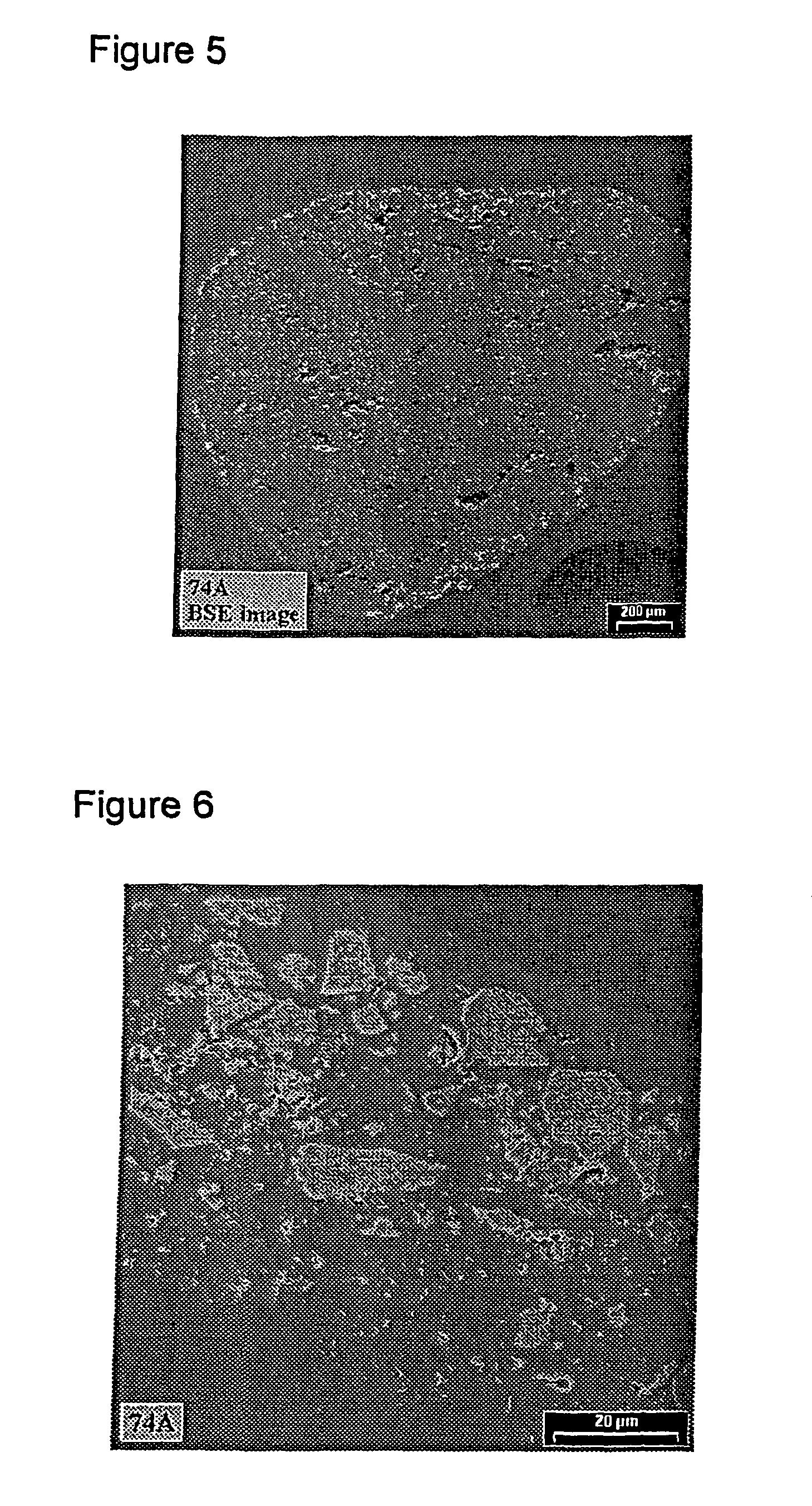Algae resistant roofing granules with controlled algaecide leaching rates, algae resistant shingles, and process for producing same
a technology of algaecide leaching and algae resistant shingles, applied in the field of algaecide-resistant roofing shingles, can solve the problems of severe discoloration of the entire roof, and treatment is usually effective, and achieve the effect of easy control of algaecide leaching rates
- Summary
- Abstract
- Description
- Claims
- Application Information
AI Technical Summary
Benefits of technology
Problems solved by technology
Method used
Image
Examples
example 1
[0063]634 g of stone dust from rhyolite igneous rock (Wrentham, Mass.) are mixed for 20 minutes in a Hobart mixer with 1901 g of kaolin clay (Cedar Heights Clay Co., Oak Hill, Ohio), 44 g of cuprous oxide (American Chemet Corporation, Deerfield, Ill.) and 2.2 g of Kadox—brand zinc oxide (Zinc Corporation of America, Monaca, Pa.). The mixture is then extruded using a single barrel extruder to form green granules having an average particle size of about 2.5 mm. The green granules are then fired in a Blue M periodic oven (Lunaire Limited, Williamsport, Pa.) at a temperature of 1050 degrees C. for 180 minutes.
example 2
[0064]The process of Example 1 is repeated, except that 500 g of the fired granules are coated with a colorant mixture of 15 g of pigment particles (V-780, Ferro Corporation), 40 g of aqueous sodium silicate (40 percent by weight solids, having a Na2O:SiO2 ratio of 1:3.2), and 30 g of kaolin clay. 0.152 g of coating mixture are applied per g of granule. The coated granules are subsequently fired in a rotary kiln at 500 degrees C. for 20 minutes.
example 3
[0065]The process of Example 1 is repeated, except that 500 g of fired granules are coated with an algaecide mixture of 17 g of cuprous oxide, 1.1 g of zinc oxide, 60 g of the aqueous sodium silicate employed in Example 2, and 45 g of kaolin clay. 0.246 g of the algaecide mixture are applied per g of granules to form algaecide-coated granules. The algaecide-coated granules are further coated with a colorant coating mixture employed in Example 2, except that 6 g of pigment particles, 16 g of sodium silicate, and 10 g of kaolin clay are used. The resulting coated granules are subsequently fired in a rotary kiln at 400 degrees C. for 20 minutes.
PUM
| Property | Measurement | Unit |
|---|---|---|
| Fraction | aaaaa | aaaaa |
| Fraction | aaaaa | aaaaa |
| Percent by mass | aaaaa | aaaaa |
Abstract
Description
Claims
Application Information
 Login to View More
Login to View More - R&D
- Intellectual Property
- Life Sciences
- Materials
- Tech Scout
- Unparalleled Data Quality
- Higher Quality Content
- 60% Fewer Hallucinations
Browse by: Latest US Patents, China's latest patents, Technical Efficacy Thesaurus, Application Domain, Technology Topic, Popular Technical Reports.
© 2025 PatSnap. All rights reserved.Legal|Privacy policy|Modern Slavery Act Transparency Statement|Sitemap|About US| Contact US: help@patsnap.com



